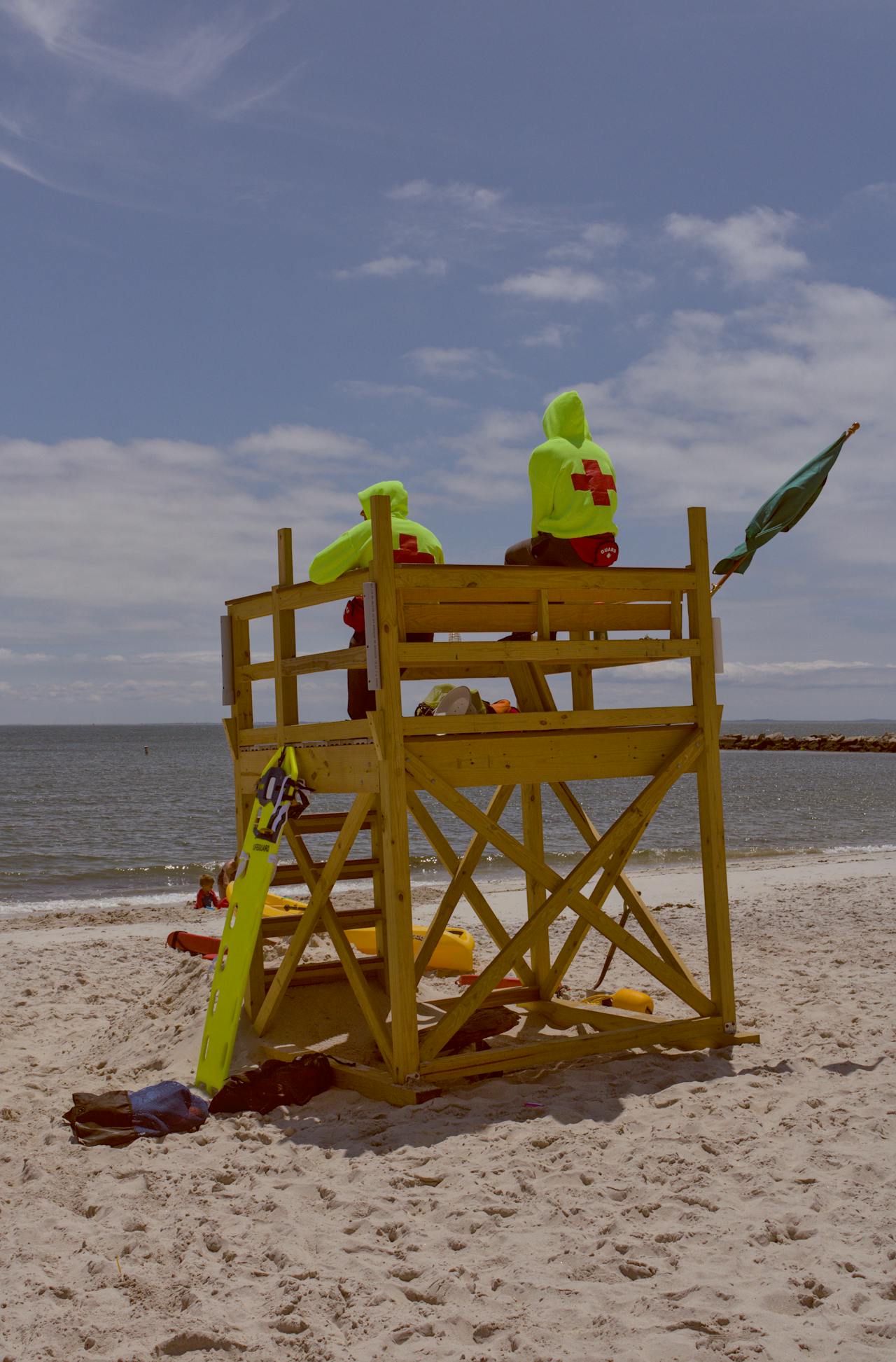
February 24, 2025
Galveston’s First Black Lifeguards Honored With Historical Marker
The area where the marker is displayed is part of what used to be called Brown Beach, a segregated beach once patrolled by the city's first Black lifeguards.
Galveston, a city deeply tied to the history of Black freedom through Juneteenth and the emancipation of enslaved people in Texas, revealed a hidden chapter of its past with the installation of a new Texas historical marker along the Galveston Seawall on Feb. 1.
According to ABC 13, the area where the marker is displayed, near 27th Street, is part of what used to be called Brown Beach, a segregated beach that was once patrolled by the city’s first Black lifeguards.
David Mitchell, the chair of the African American Beach Lifeguard Memorial project, one of the groups that pushed for the creation of the marker, told the outlet that Black lifeguards served the area for over 30 years.
“This is an area of where they protected and served African American beachgoers during segregation between the years of 1930 up until 1962,” Mitchell said.
The marker tells a story that some Black residents of Galveston, like Sharley Adams, lived through parts of.
As Adams told KPRC-2 News, she remembers the indignity of Galveston during Jim Crow.
“We wanted to integrate downtown,” she recalled. “Our parents pay taxes here in Galveston…and yet, we could not sit on the counters.”
Adams continued, recalling how she felt when she and some of her friends tried to integrate Galveston’s whites-only beach.
“I was traumatized and really realized that it was because of my color,” she said. “I think it was just like this because I was African-American.”
According to Mitchell, the story of Galveston’s first Black lifeguards is important, particularly given the context of today’s anti-diversity, equity and inclusion movements.
“It’s important because it actually speaks to the necessity to make sure that inclusiveness is literally a way of life,” Mitchell said.
According to The Galveston Daily News, the Texas Historical Commission awarded the site an “under-told” history marker in commemoration of the “fascinating history of heroic African American lifeguards” like James “Jim” Helton, Waverly Guidry, Leroy Green Jr., Lynn Stephens, John Ned Rose, Willie Diggs, and Oliver O’Conner.
In 1921, Black residents of Galveston asked for a lifeguard to oversee the beaches of the city, and in 1935, Helton officially became the city’s first Black lifeguard, followed by Guidry in 1943. The pair have been credited with saving the lives of over 30 people and were also tasked with recovering those who had drowned.
The project has three phases, phase one was erecting the historical marker, phase two involves the development of a database profiling Black lifeguards and Black beach history on Galveston Island by historians, and phase three involves the creation of a sculpture that is a representation of past and present Black lifeguards in an artistic representation of their contributions.
According to Carol Bunch Davis, an island researcher specializing in African American culture, the state’s under-told marker series is “intended to address historical gaps, promote diversity of topics and proactively document significant underrepresented subjects or untold stories.”
She continued, discussing the monument’s significance and the stories of the pioneering lifeguards.
“Their stories offer insights about the different roles the guards played in the community. They were often longshoremen who sometimes ran small businesses or held a variety of jobs to support their families. They were held in high esteem and served a pivotal role in the community by providing protection to all,” Davis said.
RELATED CONTENT: Charlotte’s ‘Evolutionary Aquatics’ Club Creates Safe Space For Black Adults To Learn To Swim